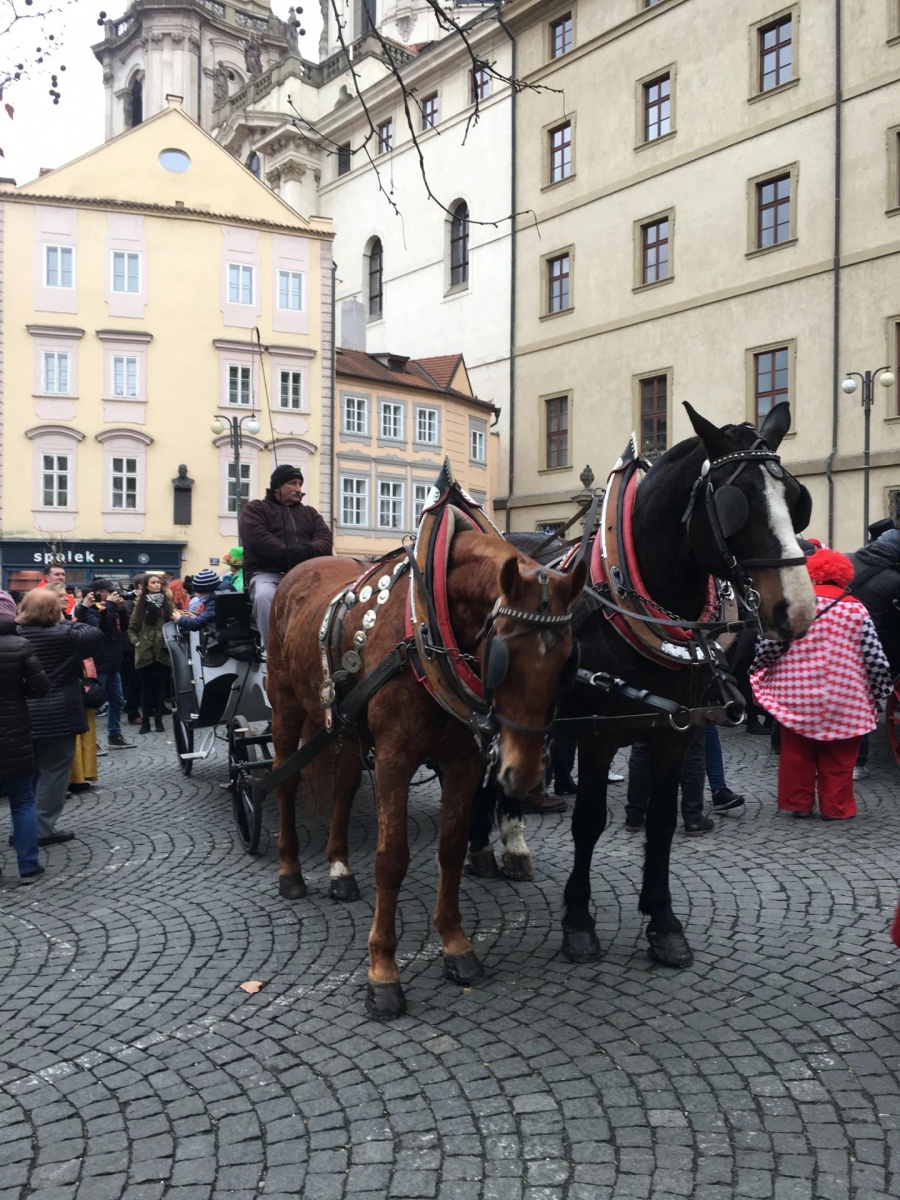Hello! Are you interested in Czech folklore or perhaps planning to visit Prague in the near future? Well, today you are lucky because I have something very interesting to tell you about. It is early March and tomorrow I am going to the front of the Black Bull Pub on Loretanske square Around me, there are going to be, as every year, all kinds of colorful costumes and masks. But why?
Because it is Masopust! The Slavic Carnival. And here in Prague, we celebrate it with a Shrovetide masked procession through the city, accompanied by dancing, singing, drinking, and eating as much meat and fried doughnuts as possible, because tomorrow the period of restraint and piety known as Lent begins.
I'm going to be dressed as a nun and you are probably wondering why. Well, it is for protection. You will see that on Masopust traditional decorum is replaced with revelry. After all, who is the one connected with the theatre and the masks of drama? It is Dionysius! The god of drinking, and fertility, you know what I mean...
Since Lent is a period of restraint and sacrifice, it's not only eating that is part of Masopust, but the masks allow for all kinds of decadent, and excessively naughty behavior. The etymology of the word carnival comes from Carne (meat) and vale (leave). In Czech, it's the same. Masopust. Maso means meat and pust means abandonment. So this day, is really the day, to get your fill of meat, and other carnal pleasures, before you let it go, which is why all the local pubs are open to serve refreshments to the wild revelers.
Traditionally, there are certain costumes that one finds repeatedly at Masopust. There are costumes associated with male fertility, like the horse, or the bear. There is death associated with the end of one season, and likewise, the chimney sweeper, associated with spring cleaning. You can also find religious figures like myself, the nun and the figure of the pious Jew, who might somehow be connected with the faith of our ancestry. We can also see costumes of horse and bear during Masopust. Both symbols of virile power, of masculine fertility. They usually dancing in circles, reminding us of the circle of life, or the Sun Disc. These animals are some of the oldest Masopust masks. Especially the bears who wake up when Spring begins. Other figures wear a chicken or a goose instead of a hat since eggs are symbols of life...and the colorful rags sewn onto their clothes represent feathers. And another traditional element of Masopust costumes - often revelers are wearing some small kind of puppet, or doll, sewn onto their backs.
Anyway, Masopust usually ends with the symbolic killing of the leader mask, sometimes the horse, so that he can come back to life and complete the cycle...
I hope that I satisfied your curiosity! Hope you all join the Shrovetide masked procession through the city this or any other year. Later I will definitely upload some photos.
From our external collaborator Tereza Kultová